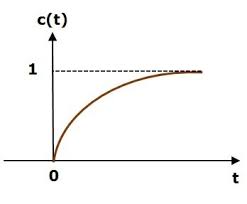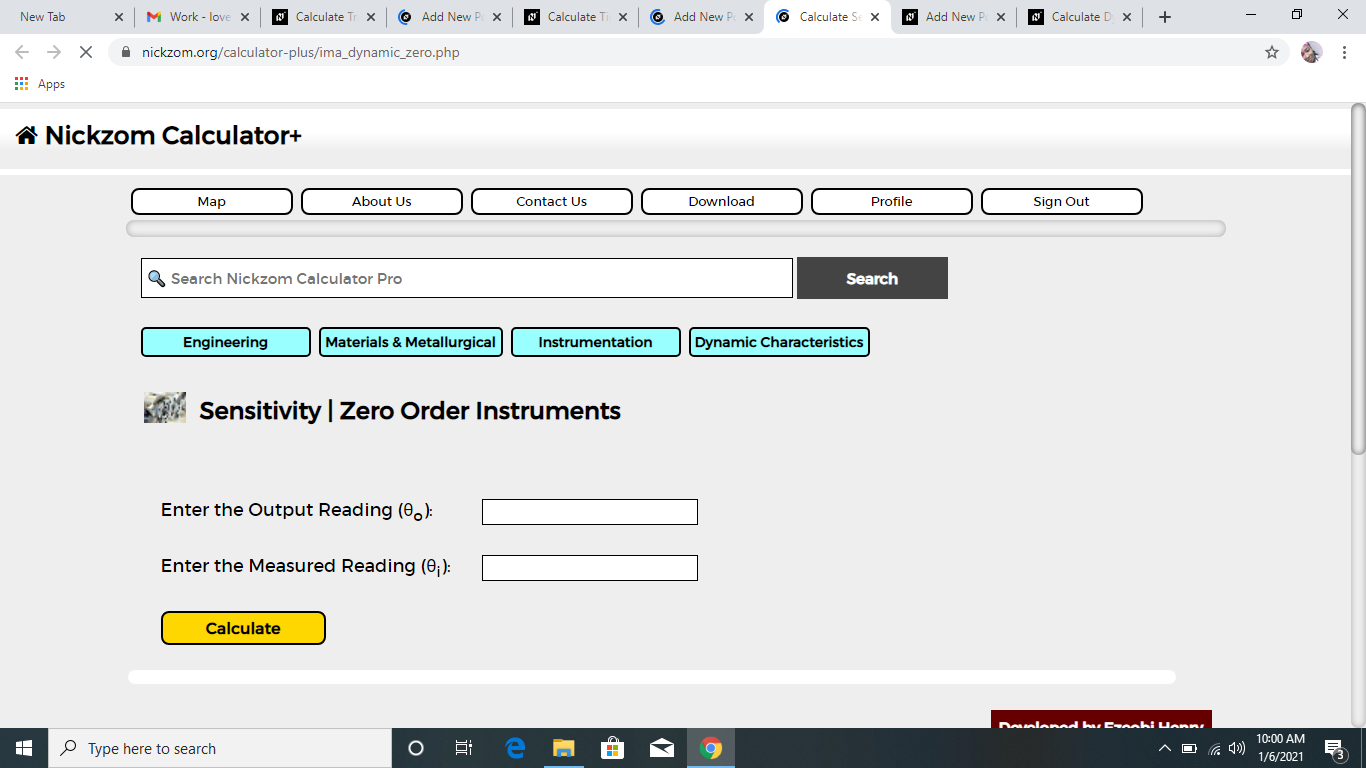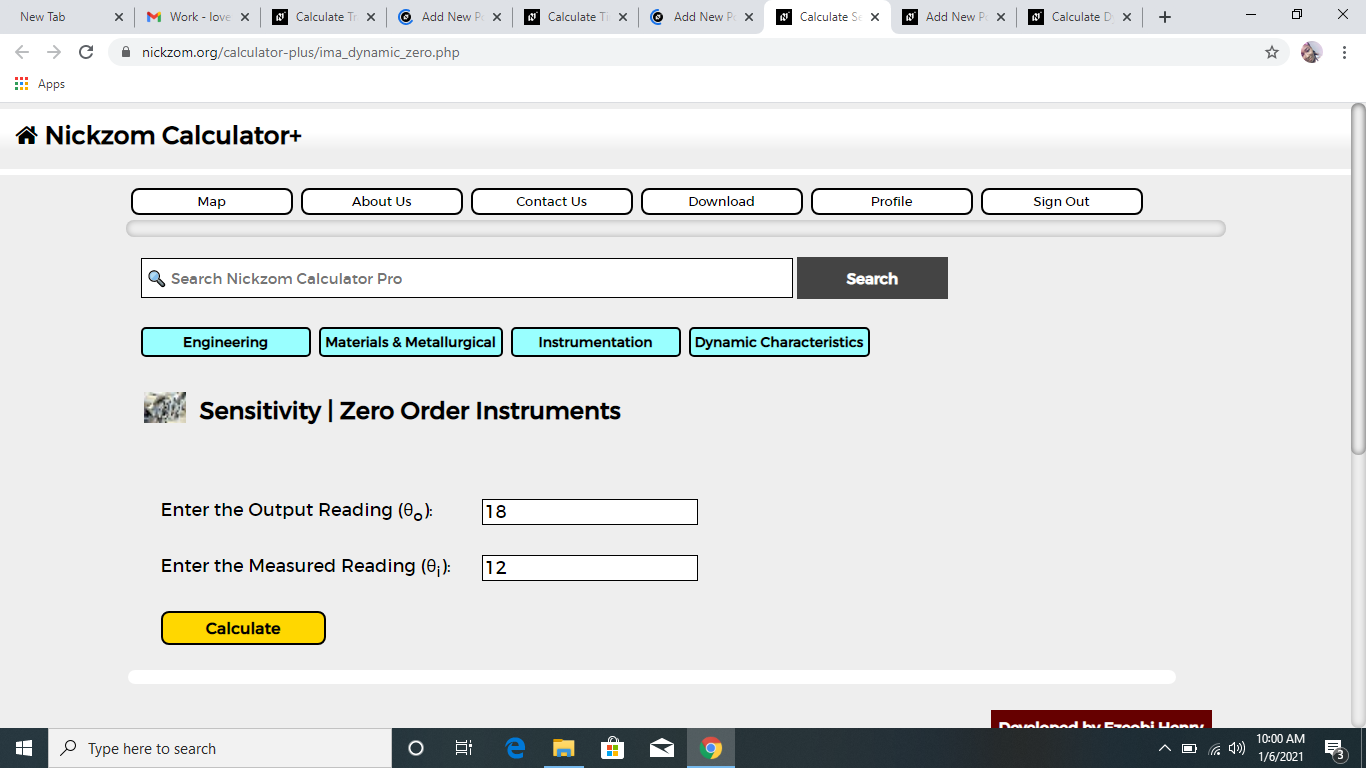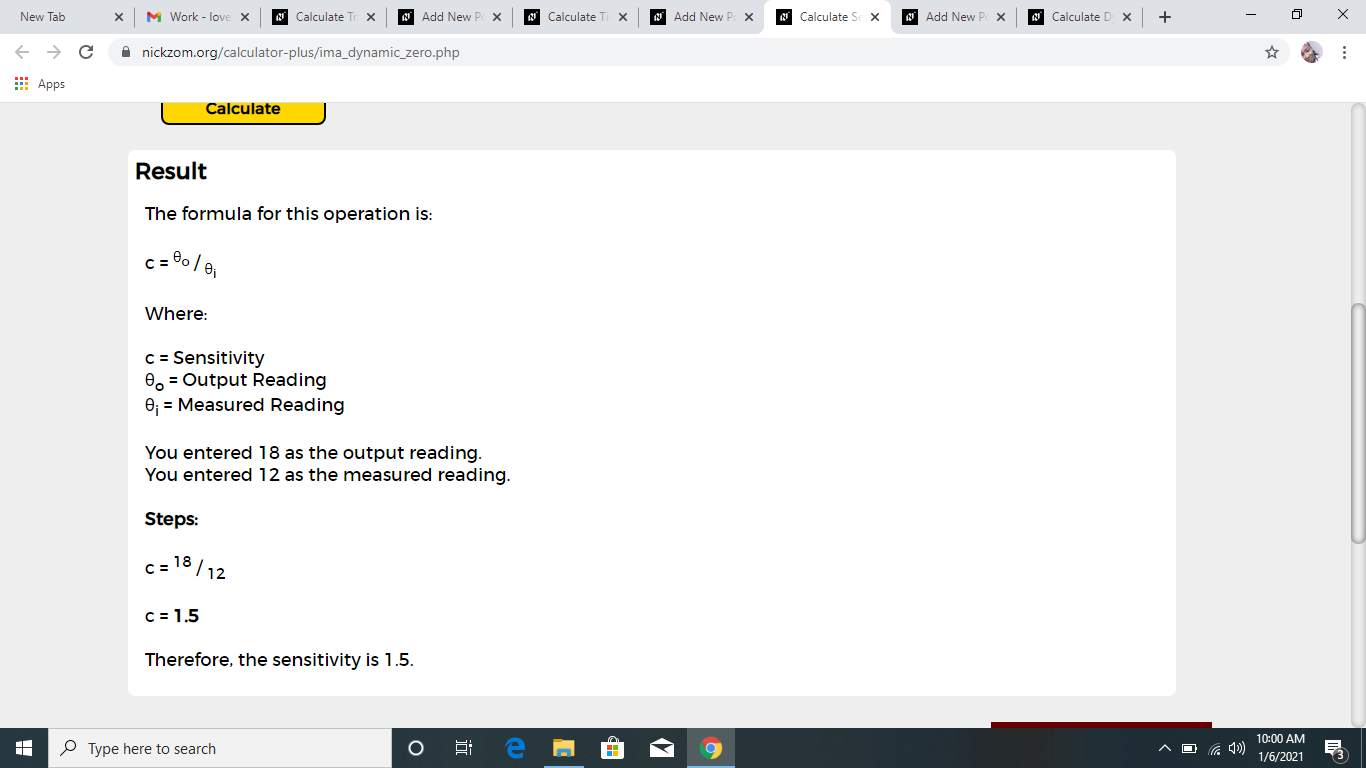How to Calculate and Solve for Sensitivity | Zero Order of Instrument | Dynamic Characteristics of Instruments
Last Updated on April 23, 2024
The image above represents sensitivity |Zero Order Instrument. To calculate sensitivity, two essential parameters are needed: Output Reading (θo) and Measured Reading (θi).
The formula for calculating sensitivity:
c = θo / θi
Where:
c = Sensitivity
θo = Output Reading
θi = Measured Reading
Let’s solve an example;
Find the sensitivity when the output reading is 18 and the measured reading is 12.
This implies that;
θo = Output Reading = 18
θi = Measured Reading = 12
c = θo / θi
So, c = 18 / 12
c = 1.5
Therefore, the sensitivity is 1.5.
Read more: How to Calculate and Solve for Sensitivity Drift Co-efficient | System Performance Characteristics
Calculating for the Output Reading when the Sensitivity and the Measured Reading are Given
θo = c x θi
Where;
θo = Output Reading
c = Sensitivity
θi = Measured Reading
Let’s solve an example;
Find the output reading when the sensitivity is 20 and the measured reading is 7.
This implies that;
c = Sensitivity = 20
θi = Measured Reading = 7
θo = c x θi
Then, θo = 20 x 7
θo = 140
Therefore, the output reading is 140.
Read more: How to Calculate and Solve for Sensitivity Drift | System Performance Characteristics
Calculating for the Measured Reading when the Sensitivity and the Output Reading are Given
θi = θo / c
Where;
θi = Measured Reading
c = Sensitivity
θo = Output Reading
Let’s solve an example;
Given that the sensitivity is 10 and the output reading is 40, find the measured reading.
This implies that;
c = Sensitivity = 10
θo = Output Reading = 40
θi = θo / c
Then, θi = 40 / 10
θi = 4
Therefore, the measured reading is 4.
Read more: How to Calculate and Solve for Sensitivity | System Performance Characteristics
How to Calculate Sensitivity | Zero Order of Instrument Using Nickzom Calculator
Nickzom Calculator – The Calculator Encyclopedia is capable of calculating the sensitivity | Zero Order Instrument.
To get the answer and workings of the sensitivity | Zero Order Instrument using the Nickzom Calculator – The Calculator Encyclopedia. First, you need to obtain the app.
You can get this app via any of these means:
Web – https://www.nickzom.org/calculator-plus
To get access to the professional version via web, you need to register and subscribe for NGN 2,000 per annum to have utter access to all functionalities.
You can also try the demo version via https://www.nickzom.org/calculator
Android (Paid) – https://play.google.com/store/apps/details?id=org.nickzom.nickzomcalculator
Android (Free) – https://play.google.com/store/apps/details?id=com.nickzom.nickzomcalculator
Apple (Paid) – https://itunes.apple.com/us/app/nickzom-calculator/id1331162702?mt=8
Once, you have obtained the calculator encyclopedia app, proceed to the Calculator Map, then click on Materials and Metallurgical under Engineering.
Now, Click on instrumentation under Materials and Metallurgical
Now, Click on Dynamic Characteristics of Instruments under Instrumentation
Then, Click on Sensitivity | Zero Order Instrument under Dynamic Characteristics of Instruments
The screenshot below displays the page or activity to enter your values, to get the answer for the sensitivity | Zero Order Instrument according to the respective parameters which is the Output Reading (θo) and Measured Reading (θi).
Now, enter the values appropriately and accordingly for the parameters as required by the Output Reading (θo) is 18 and Measured Reading (θi) is 12.
Finally, Click on Calculate
As you can see from the screenshot above, Nickzom Calculator– The Calculator Encyclopedia solves for the sensitivity | Zero Order Instrument and presents the formula, workings and steps too.










